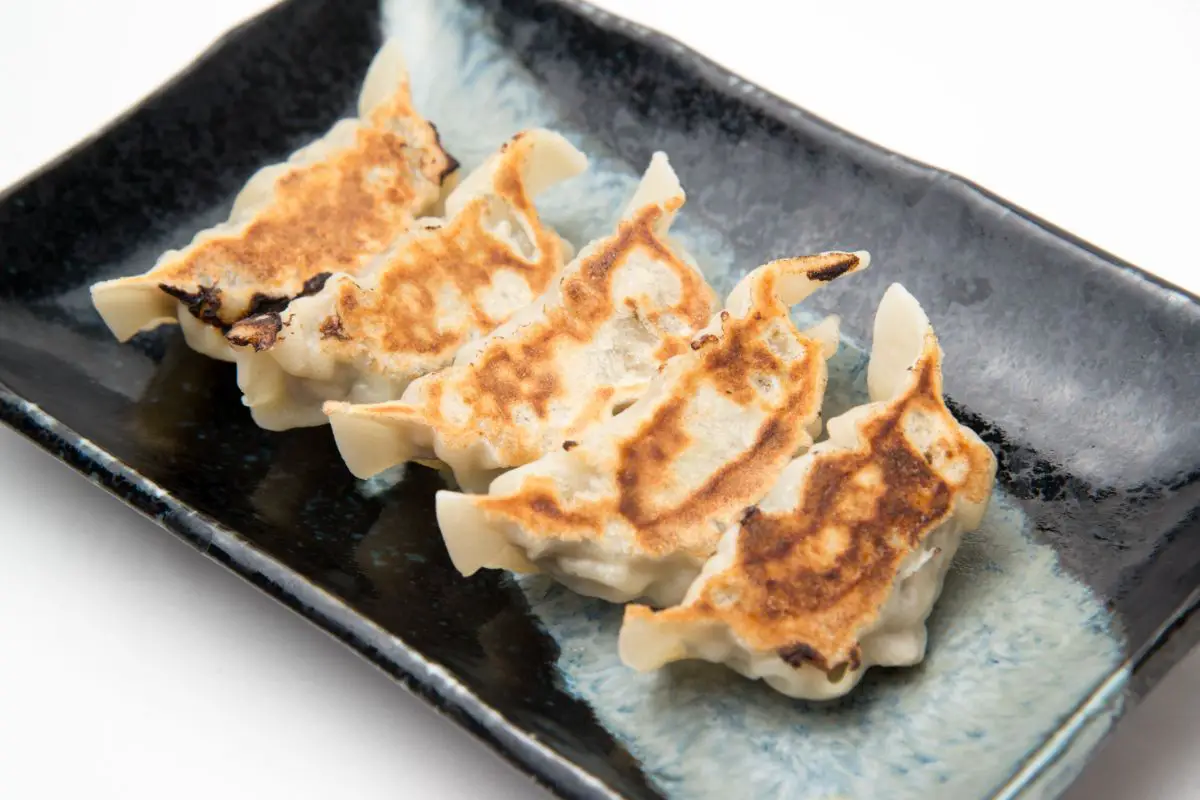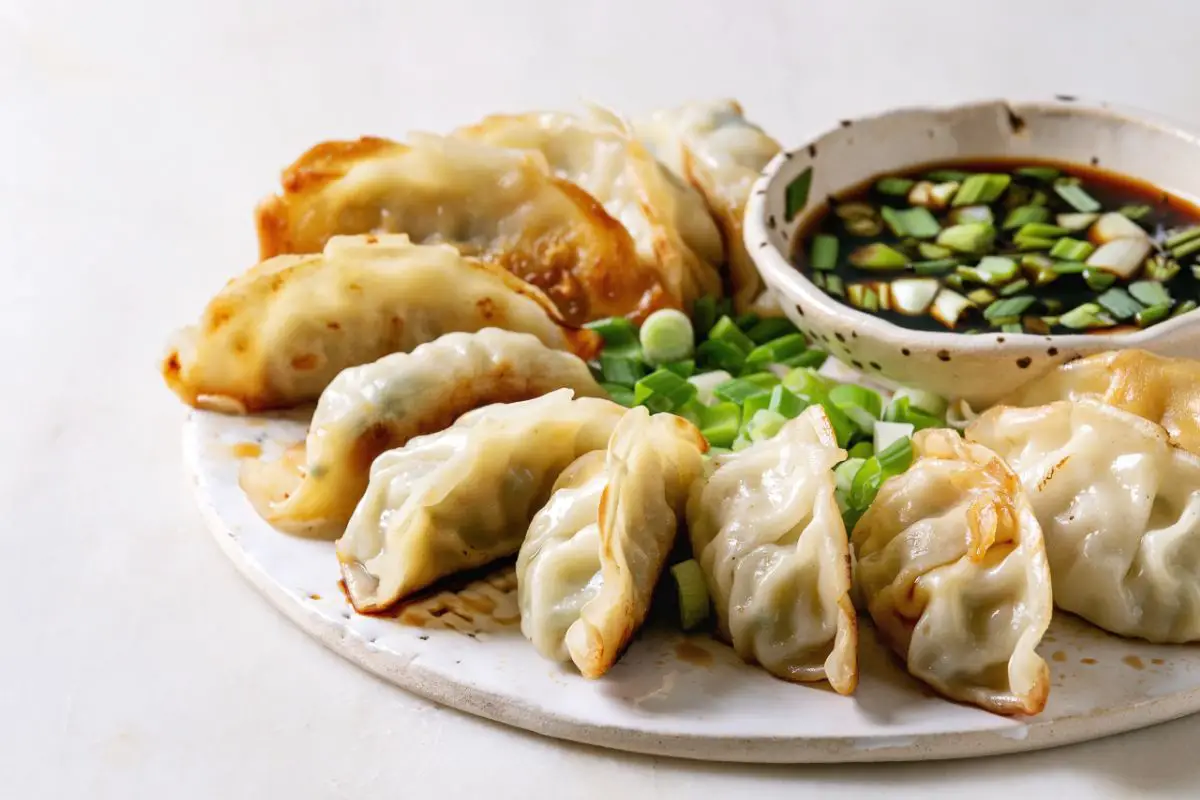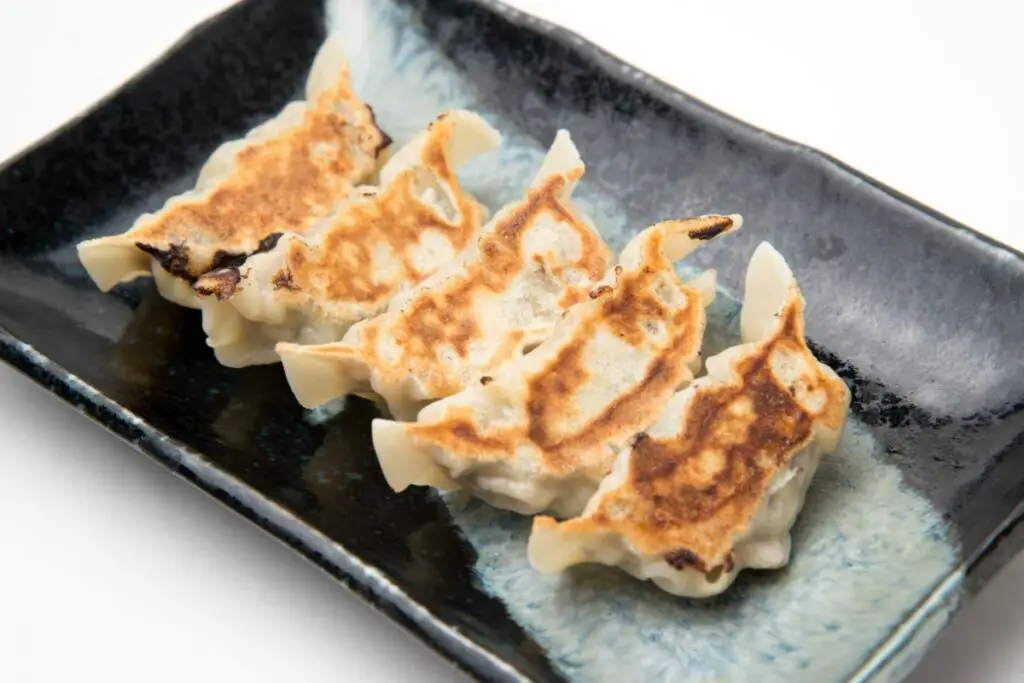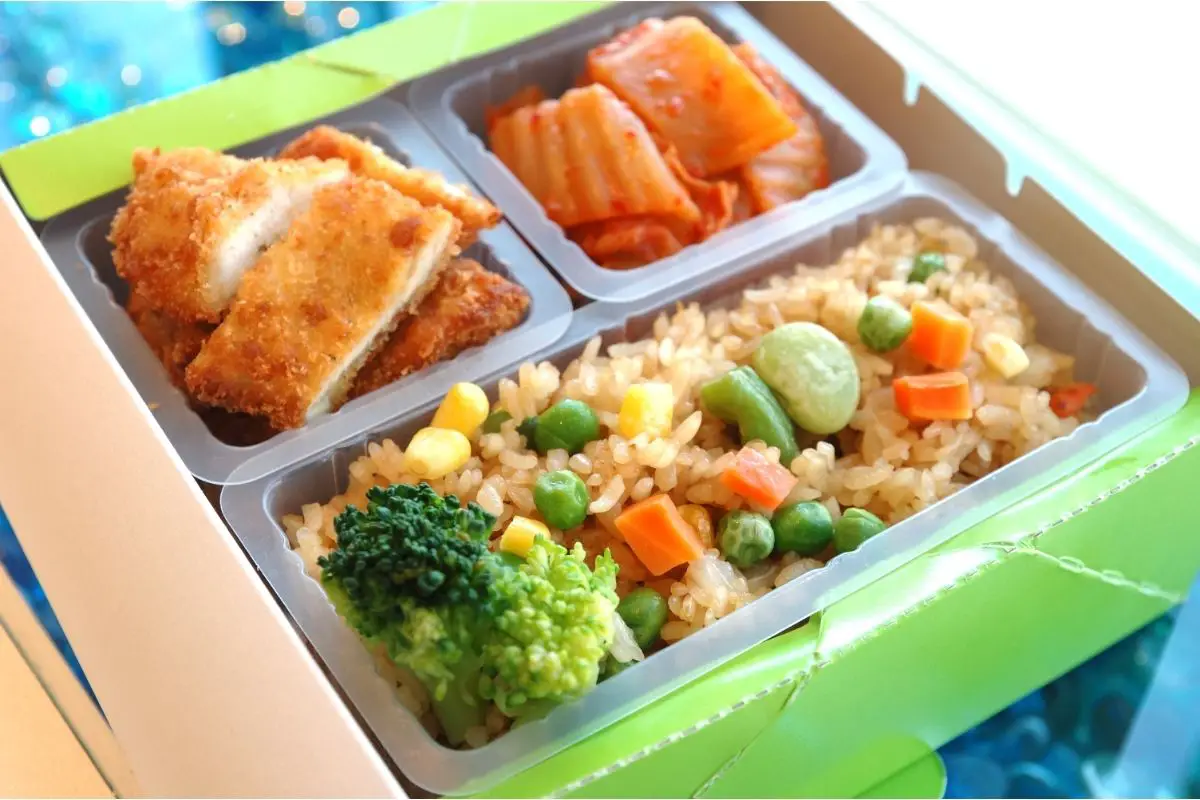There is nothing like having food from Japanese cuisine.
The mix of flavors that are in their dishes is unique and completely delicious. Though if you have any intolerances or allergies to things like gluten, then you might need to be a bit warier when going to try new foods (see also ‘Do Bento Boxes Keep Food Warm?‘).

One of the most popular Japanese dishes is the gyoza. So, are gyozas gluten-free? If you’re looking for a quick snack or appetizer, these Japanese dumplings are perfect for a light meal or party food (see also ‘Is Japanese Food Healthy?‘).
They’re also delicious hot or cold.
If you want to try gyozas but are unsure if they are gluten-free, then you have come to the right place.
We are going to break down the ingredients usually found in gyozas and see if there is any gluten present.
What Are Gyozas?
Gyozas are a type of dumpling that originated in Japan.
They’re typically filled with vegetables or meat. Gyozas are often served with dipping sauce, but you can also add other ingredients such as ketchup, soy sauce, sesame oil, and wasabi paste.
These dumplings are made by wrapping dough around the filling and sealing it shut. You can find both fresh and frozen versions at your local grocery store.
The taste of gyozas is similar to potstickers, which are another type of dumpling. Both types of dumplings are easy to make and fun to eat!
Gyozas have a very specific flavor that changes depending on the filling. There are many fillings for gyozas like pork, beef, chicken, seafood, and vegetables.
The great thing about gyozas is they can be cooked in a variety of ways. The traditional way of cooking gyozas is by frying the bottoms of them and then steaming them. Alternatively, you can completely fry them for crispy gyozas, or you can steam them for soft gyozas.
Are Gyozas Gluten-Free?
In order for us to understand whether or not gyozas are gluten-free, we need to break down the ingredients that are used to make gyozas.
The main concern for gluten comes from the dough that is used to wrap the filling in. A lot of people choose to buy store-bought gyoza wrappers. The only way to check if they are gluten-free is to see what the packaging says.
However, if you are wondering about homemade gyoza wrappers, then we have to look at what they traditionally use to make them.
The basic recipe for homemade gyoza wrappers consists of:
- 2 cups of all-purpose flour
- 1/2 cup of water
- 1/2 teaspoon of salt.
Luckily for us, there are not many ingredients in the gyoza wrapper recipe. So being able to work out if they are gluten-free is easy.
The main ingredient of traditional gyoza wrappers is all-purpose flours. So, is all-purpose flour gluten-free?
Unfortunately, all-purpose flour is not gluten-free. All-purpose flour is made from the starchy part of wheat grain called the endosperm. So it does contain gluten.
The amount of gluten all-purpose flour contains varies on the type of flour you purchase and the type of wheat they use. However, the usual range of gluten present in all-purpose flour is between 8 and 10 percent.
So, to summarize this, traditional Japanese gyozas are not gluten-free. There is gluten present in them because of the ingredients they use to make dough.
Are Gyozas At Restaurants Gluten-Free?

Now that we know what makes the dough of gyozas it is best to assume that the gyozas made at restaurants are also not gluten-free. This is because most restaurants tend to stick to traditional recipes.
However, it is always a good idea to ask. A lot of restaurants provide gluten-free options. This means you might be in luck when it comes to finding a gluten-free gyoza option on the gluten-free menu.
Can I Make Gluten-Free Gyozas?
If you are struggling to find gluten-free gyozas at restaurants, then you should make your own.
The good thing about there being a widespread awareness of gluten intolerance is that there are a lot of alternative recipes for those who suffer from gluten intolerance. You just need to search online for some ideas.
Here is a basic recipe for making your gluten-free gyozas:
- Rice flour (60 grams)
- Glutinous rice flour (120 grams)
- Boiling water (125 milliliters)
- Xanthan gum (1/2 of a teaspoon)
- Sunflower oil (1 tablespoon)
This is a standard recipe for making gluten-free gyoza wrappers. All you have to do to make these wrappers is mix the dry ingredients.
Once you have done this, you add the wet ingredients into the dry and mix until a dough is formed.
Can I Make Gluten-Free Gyozas Without Xanthan Gum?
Some people choose not to cook with xanthan gum as it can give them a reaction similar to having eaten gluten.
The good news is that you can make gyozas without having xanthan gum as one of the ingredients.
Here are the ingredients for making gluten-free gyoza wrappers that do not contain xanthan gum:
- Rice flour (1 cup)
- Hot water (2/3 cup)
- Tapioca flour (2/3 cup)
- Salt (1/2 teaspoon)
- Psyllium husk powder (2 tablespoons)
- Oil (2 teaspoons)
This is a gluten-free and xanthan gum-free recipe. All you have to do to make these gyoza wrappers is to mix the dry ingredients first, then mix in the wet ingredients.
Keep mixing until it forms a dough. Then when the dough isn’t hot, knead until it becomes smooth.
Final Thoughts
So to summarize all of this, traditional gyozas are not gluten-free.
They may be safe for those who are sensitive to gluten but if you are looking for gluten-free gyozas then you will have to look elsewhere.
Or you could make them yourself! Making your gluten-free gyoza wrappers is quick and easy. You can even store them in the freezer, so you have wrappers prepared for next time.
If you are ever unsure about whether the gyozas you are purchasing are gluten-free, check the ingredients that are used or ask someone.
Hopefully, this article has helped you understand more gyozas and how to make your gluten-free versions.









